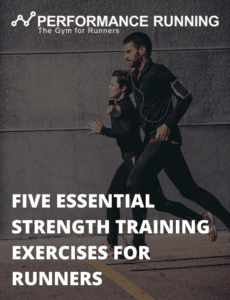
By David Nogle, I.S.S.A. Certified Personal Trainer, I.S.S.A. Certified Nutrition Coach, UESCA Certified Run Coach, USATF Level 1 Certified Coach, US Boxing Certified, USAB Certified Coach, and Runner
This blog is a continuation of the “Making a Sprinter a (Mid)Distance Runner”. It will not be labeled as such though, as these tips apply to anyone and everyone. There are some differences in how to race in the long distance world, especially if you come from sprinting or another background (sports or not). Trust this: if you make any portion of the race outside of the final 10% of the race a sprint, you’ll come to sorely regret that. That’s not to say that sprinting doesn’t have its strategic attributes. They’re just very, very different. On the other hand, the intensity is also very different. In your typical coaches textbook definition of intensity- distance running has more of it. While difficulty is a separate argument, what trainers mean by intensity is the stress put on your aerobic system. With this said, while distance races are obviously a longer amount of time to be in pain, the pain is much more mild, tolerable, and slower to settle in. It’s easy to put on some boom baps and be extremely pumped to get onto the track. Even once that music is off, and the race begins, it’s easy to be pumped up for a lap. Lap two might also be alright. Lap three rolls around, well now you find out how bad you want it. Just remember to be resilient when things get hard, because that’s when some people are prone to throw their hard work out the window. Distance running is also utilizing different muscle groups and “fuel” systems. We’ll cover that in a bit though. As far as racing goes, know that experience is going to go a long way as trial and error are all too necessary in the added complexity of not having lanes. Here are some tips in long distance racing that may be new to a sprinter (or anybody):
- The most basic tip, I mention first because it is the most simple, yet a comically common mistake. Sometimes distance has a double waterfall. Start to let the pack string out. If you’re ever in this position, don’t worry, the official will explain it to you. Once you’re in your race, get to the rail (inside of the track) as soon as you can. Then, stay there. If somebody is below you and blocking your inside, don’t exert yourself too hard to try to get ahead of this runner. It’s more efficient to just wait until things string out until you have space. Let it open up organically and take the opportunity once it’s there. Mainly, please, I beg you, if you’re alone, don’t run on the outside. You’re running further for no reason. It’s like purposely slowing your race down. This seems so obvious but I see it at so many lower level meets, and have even seen it on the national level. It has possibly lost runners national titles. Also, if you have tons of room in either direction (in front or behind), if you realize it, there’s no reason to run on the outside of another runner. I’ve seen runners that can run 30 seconds faster in an event than their next best opponent lose the race because they decided to run 15 laps on the outside of that runner.
- If you biff a start, you’re fine, relax. The longer the race, the shorter the percentage of the race that the first five seconds is. Don’t get hung up on it.
- If you get boxed in (surrounded, unable to move as fast as you wanted), never, ever try to make up any time that it slows you down right away, unless the pack is moving comically slow. The reason for this is that runners are already generally going faster than race pace in the beginning of a race. So not only would you have to match that, but you need to go faster than that to actively be passing runners. Wait until runners have slowed, and perhaps settled into a more comfortable race pace. Then, make your move patientally.
- In sprinting, a gap of so much as 0.25 is drastic, and needs to be closed quickly. You may know where your strong moments in a race are. However, know that it doesn’t matter if a notable gap opens up that isn’t realistic to close. In distance running, if somebody is normally near your speed, it can often be an advantage to you if they pull a ridiculous amount of distance on you. They are usually just getting out too hard, and will eventually burn up and come back. Just stay in a comfortable reaching distance, and remember that you’ll have plenty of time to close that distance back up.
- When you make your move, do it slow. You’ll often see younger or newer runners passing a whole field, in the middle of the race, in one straightaway. Don’t do that. You shouldn’t have to drastically change your race pace to pass a group. Once you make a move, dedicate yourself to it. Do it patiently and slow. It’s not efficient or useful in any way to blast past your opponents unless you’re going to maintain that pace for the rest of the race. Plus, as a (former) sprinter, you may have that much extra leg speed in your legs ready to go, whenever. Save it, because trust me, you’ll need it.
- No autopilot! This is actually something sprinters are often good at. In sprinting, you must have monstrous focus and be unimaginably precise. Once running longer distances, there is the challenge of staying focused over time. Unless running for hours on end (ie. marathons and ultramarathons) autopilot is not your friend. To just shut your brain off in your race is a sure way to run a slow time. Once you find your rhythm, you need to constantly reanalyze if you’re going as fast as you can. Think about how much distance you have left, and try to judge the best you can how fast you can go for that distance. If you don’t do this, and go into this autopilot mode, you’ll find that you feel like you’re going the same speed, but you’re actually slowing as your body fatigues.
- In distance running, you’ll learn about the common term “kicking.” This is the burst of speed (or lack thereof) that runners have near the end of a race. The predictable part about this, is that runners who are better sprinters tend to have a faster kick. In a physiological sense, the kick is generally about 300m, or between a minute or two. However, this can vary greatly. The reason this happens isn’t just because you decide you aren’t tired anymore. It’s actually a scientifically explainable part of the racing process. Fast twitch fibers are used in sprinting as they are explosive but don’t have a long endurance period. However, once you’ve depleted your slow twitch fibers, it may be time to use these. As a sprinter, you may find that you have a great kick. This is a good thing, but can also be misleading. Try to kick early, and use everything up. If you find yourself having a lot of speed left at the end of a race, it could be because you waited too long to start your kick. This is very common in amateur distance runners.
- Advanced tip: If you are being followed by somebody who likely is trying to pass you, but you don’t want them to, try running in the middle of the lane. While it’s fastest to hug the bottom, if you’re prioritizing position, stay off the bottom of the lane a bit. This will force opponents to have to run further to get around you. Just make sure not to leave enough room on the bottom to get passed underneath. That’s just embarrassing. If you really want to be extra, you can keep a more aggressive pace on straights, and catch your breath on turns, making yourself completely inefficient to pass. If you want a win worse, you might be willing to be a menace like this. Just make sure you’re following all the rules.
- Advanced tip: If you were once a sprinter, and/or your optimal distance is shorter than what you’re doing right now, sometimes you should ask yourself if you are racing for time or place. More than not, it will likely be time. However, in a situation where you don’t care about time, rather a win, try to avoid making the race too honest (all out effort from start to finish). The closer you can make the finish of the race a sprint, the more you’ll be utilizing your anaerobic system, and using your aerobic system less. If you can get into a position where the pack lets you determine the pace, keep it as slow as possible. This will (hopefully) lead to a sprint finish and will give you a drastic advantage. This will also disadvantage runners at the back of the pack, for reasons similar to the second race tip listed (if everybody is at top speed, good luck passing them). A great example of this is Matthew Centrowitz at the 2016 Rio Olympic games in the 1500m.
Just remember that your best bet is to stay relaxed, and know that most of this will come naturally by being diligent and patient. See the video below for a great breakdown of what to do and what not to do on the track.
Photo by Andrea Piacquadio, obtained by Pexels.com




Recent Comments